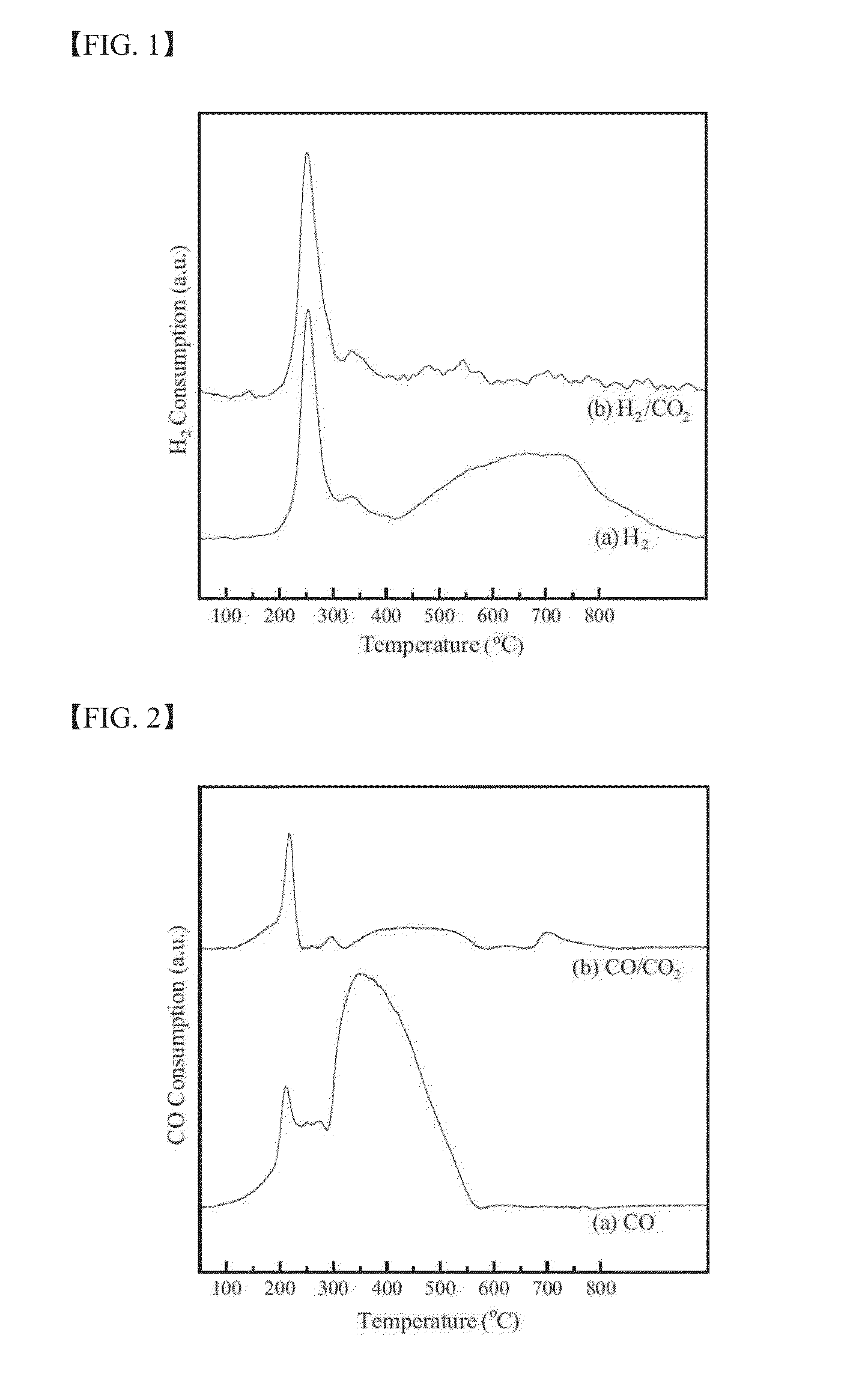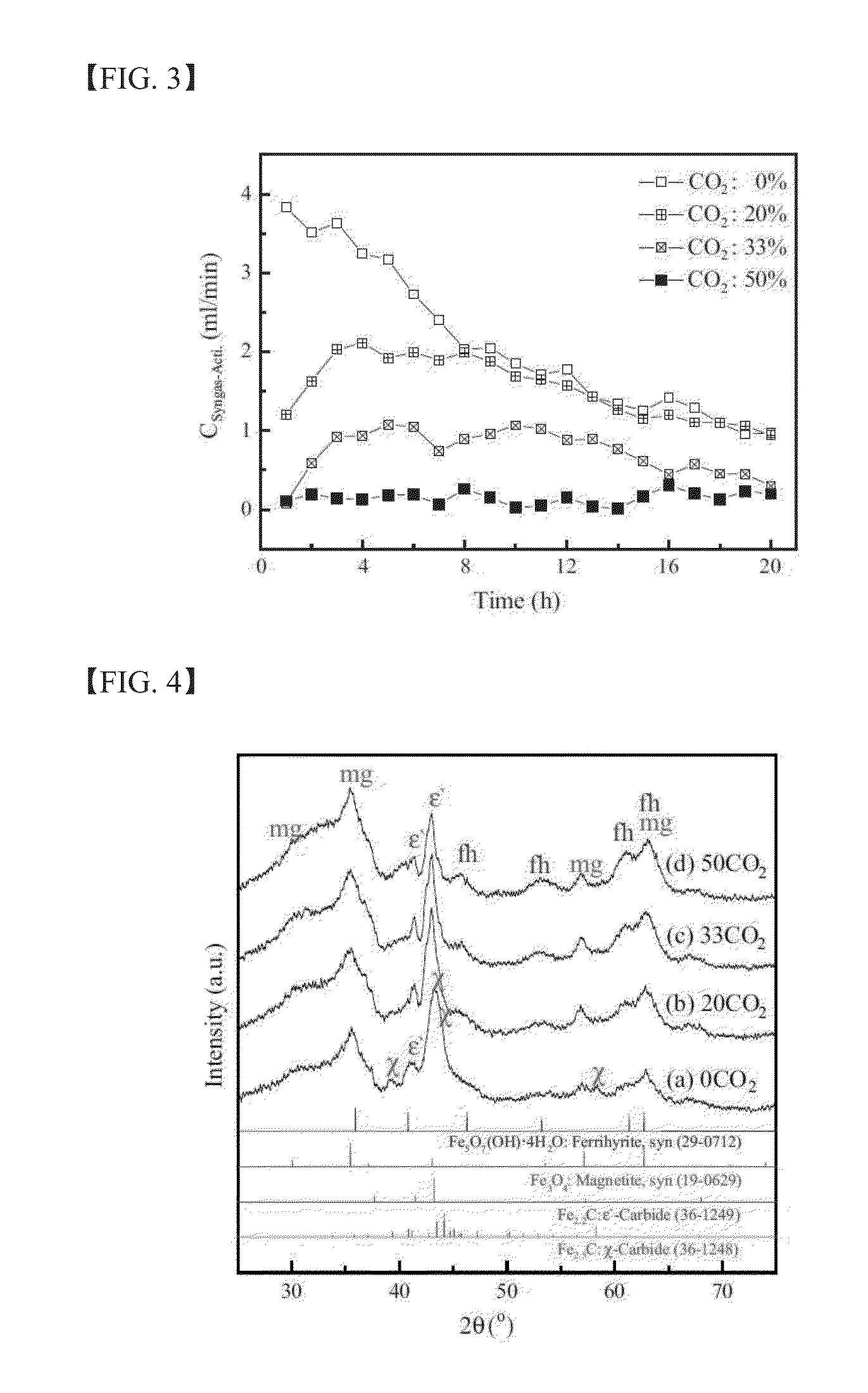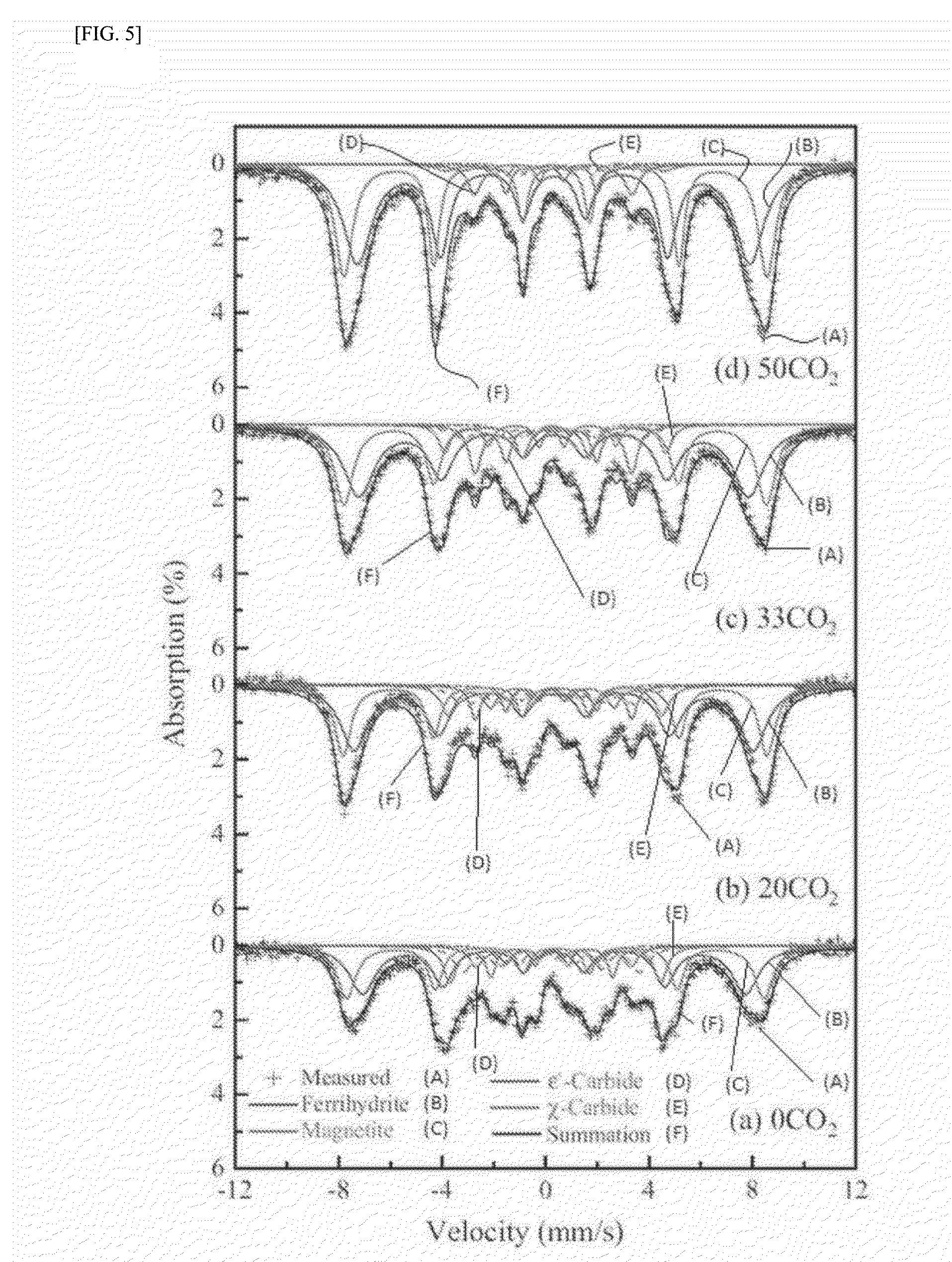Iron-based catalyst and method for preparing the same and use thereof
a technology of iron-based carbides and catalysts, which is applied in the field of iron-based catalysts, can solve the problems of limited improvement of catalyst performance, large amount of iron-based carbides in catalysts, and complicated preparation of metal/carbide/oxide structures, etc., and achieves superior productivity and selectivity, superior effect in low-temperature fischer-tropsch synthesis, and high productivity
- Summary
- Abstract
- Description
- Claims
- Application Information
AI Technical Summary
Benefits of technology
Problems solved by technology
Method used
Image
Examples
experimental example 1
Characterization of as-Prepared Catalysts
[0122]The chemical composition of the as-prepared catalysts in Example 1 was analyzed by χ-ray fluorescence spectroscopy (XRF) using a Rigaku model ZSX Primus II. Further, the Brunauer-Emmett-Teller (BET) surface area, the single point pore volume, and the average pore diameter of the as-prepared catalysts were analyzed by means of N2 physisorption using a Micrometrics model Tristar II 3020. The crystal structure of the as-prepared catalysts was characterized by χ-ray diffraction (XRD) with a Rigaku DMAX-2500 using a Cu Kα source. The quantitative analysis on the phase structure was carried out by Mössbauer spectroscopy using a 50 mCi 57Co source in a rhodium matrix. The spectrometer was operated in the constant acceleration mode, and the spectra were recorded at −268.8° C. (=4.2 K) with a fixed absorber and a moving source. The spectra were deconvoluted based on the value of magnetic hyperfine field (Hhf), isomer shift (δ), and quadruple spl...
experimental example 2
Investigation of the Influence of CO2 on the Reduction and Carburization Behavior of the Catalysts
[0124]The influence of CO2 on the reduction and carburization behavior of the catalysts was analyzed by means of temperature-programmed reduction using H2 (H2-TPR) or CO (CO-TPR) as a reducing agent. Two different carrier gases were used for each reducing agent: 5% H2 / Ar and 5% H2 / 5% CO2 / Ar for the H2-TPR and 5% CO / He and 5% CO / 5% CO2 / He for the CO-TPR. The TPR was performed at up to 800° C. at a heating rate of 6° C. / min, and the temperature was then held at the maximum temperature for 60 min. During the H2-TPR process, the amount of H2 or CO2 consumption was analyzed with a quadruple mass spectrometer (MS) with a capillary inlet system. For the CO-TPR, the amount of CO consumption was measured by a thermal conductivity detector (TCD). Ascarite (223921, Aldrich) was used as a CO2 removal trap to measure the true CO consumption profiles without considering the influence of CO2 prepared ...
example 2
Preparation of Activated Catalysts
[0132]The activated catalysts for characterization were prepared by exposing the as-prepared catalysts in Example 1 to the various activation environments. After exposing the catalysts to the activation environment for 20 hours, the reactor was cooled to room temperature and pressurized to 0.3 MPa. The reactor containing the activated catalysts was unloaded from the main reactor system using quick connectors (Swagelok. SS-QC4-D-400 and SS-QC4-B-200 for inlet and SS-QC6-D-600 and SS-QC6-B-600 for outlet) and transferred to a glove box in a N2 atmosphere (purity: 99.999%). After carefully withdrawing the activated catalysts from the reactor, the catalysts were washed with hexane to remove residual liquid / solid hydrocarbons from the catalysts. The catalysts were passivated with a gas mixture of 1% O2 in He at room temperature.
PUM
| Property | Measurement | Unit |
|---|---|---|
| pressure | aaaaa | aaaaa |
| temperature | aaaaa | aaaaa |
| weight ratio | aaaaa | aaaaa |
Abstract
Description
Claims
Application Information
 Login to View More
Login to View More - R&D
- Intellectual Property
- Life Sciences
- Materials
- Tech Scout
- Unparalleled Data Quality
- Higher Quality Content
- 60% Fewer Hallucinations
Browse by: Latest US Patents, China's latest patents, Technical Efficacy Thesaurus, Application Domain, Technology Topic, Popular Technical Reports.
© 2025 PatSnap. All rights reserved.Legal|Privacy policy|Modern Slavery Act Transparency Statement|Sitemap|About US| Contact US: help@patsnap.com



